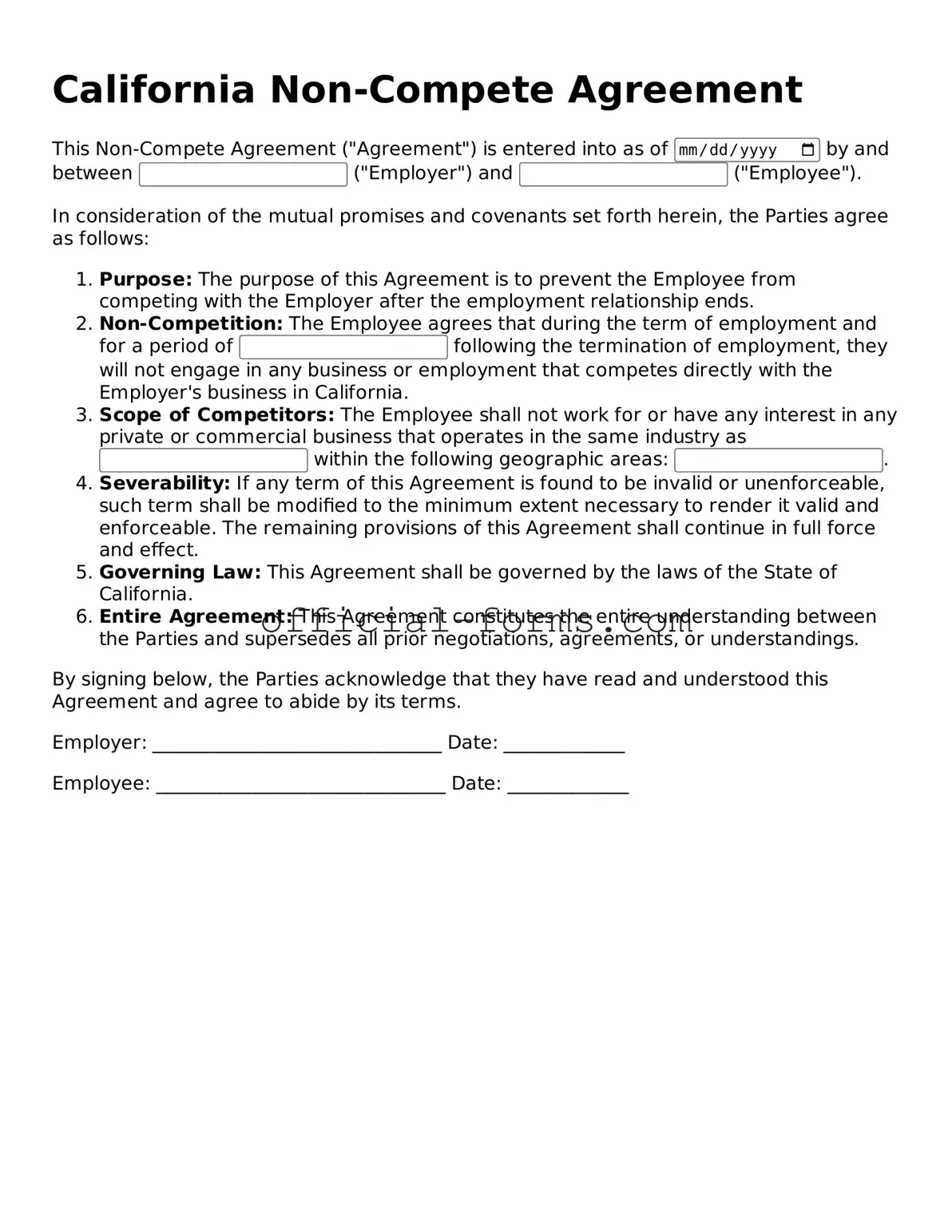When completing the California Non-compete Agreement form, individuals often encounter various pitfalls that can lead to complications down the line. One common mistake is failing to clearly define the scope of the non-compete clause. This includes not specifying the geographic area and the duration of the restriction. Without these details, the agreement may be deemed unenforceable.
Another frequent error is neglecting to consider the reasonableness of the restrictions imposed. Courts typically assess whether the terms of the agreement are necessary to protect legitimate business interests. Overly broad terms may lead to a rejection of the agreement in its entirety.
Many individuals also overlook the importance of mutual consideration. A valid non-compete agreement requires that both parties receive something of value. If one party does not provide consideration, the agreement may not hold up in court.
Some people mistakenly believe that simply signing the form is sufficient. It is crucial to ensure that all parties involved fully understand the terms and implications of the agreement. Misunderstandings can lead to disputes later on.
In addition, failing to consult with a legal professional can be a significant error. Legal advice can help clarify the enforceability of the agreement under California law. Many individuals may not be aware of the specific regulations that govern non-compete agreements in the state.
Another mistake involves using outdated or generic templates. Each situation is unique, and a one-size-fits-all approach may not adequately address the specific needs of the parties involved. Customizing the agreement is essential for its effectiveness.
People often forget to include a clause that addresses the possibility of future amendments. Without this provision, making changes to the agreement can become cumbersome and may require renegotiation.
Additionally, some individuals fail to keep a copy of the signed agreement. Retaining a copy is vital for future reference and can help prevent disputes regarding the terms of the agreement.
Another common oversight is not addressing the consequences of a breach. Clearly outlining the repercussions for violating the agreement can deter potential breaches and provide clarity for all parties involved.
Lastly, individuals may underestimate the importance of timing when executing the agreement. Signing the non-compete after employment begins, rather than before, can raise questions about its enforceability. Ensuring that the agreement is in place before any confidential information is shared is crucial.
